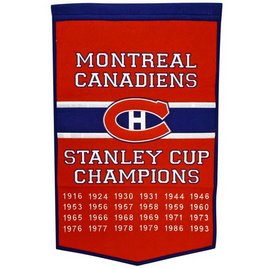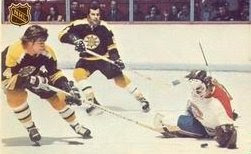
Robert L Note: Here is a interesting piece from the BCLocalNews.com site on Carey Price's offseason so far.Price Prepares For 2008-2009 SeasonBy Sage Birchwater - Williams Lake Tribune, August 21, 2008
It’s a long ways from Anahim Lake and the Cariboo Chilcotin to Montreal and the great ice hockey palaces around North America.
“There’s more people at a Montreal Canadiens home game than there is in the whole of Williams Lake,” says Carey Price, who recalls how he looked up in awe at the stands in places like Madison Square Gardens, the Bell Centre and Air Canada Centre when he first broke into the NHL last year. After completing his first season in the NHL as the Montreal Canadiens’ number 1 goaltender, Carey, who celebrated his 21st birthday on Aug. 16, is back to work getting ready for the 2008-09 season.
He took two well-deserved months off after the Habs were eliminated from Stanley Cup contention by the Philadelphia Flyers in the second round of the playoffs last May. He says taking a break and having some time off from hockey is as important as training. He went to Mexico for a week, and out to Anahim Lake for a little bit and did a little fishing and rodeo.
“I took a few trips down to Vernon. I’ve been team roping with Bobby Lewis. It’s fun.”
Carey did some exhibition team roping at the Williams Lake Stampede and the Anahim Lake Stampede, but now he’s bearing down to get back in shape for hockey. In mid July, he headed off to Calgary to work with his personal trainer with National Sports Development.
“I go in there every morning and work out. My goalie coach is there too. Eli Wilson. He’s the Ottawa goalie coach. After the workout we go and skate with him for two hours.”

In Calgary, Carey has family and a home away from home, because his cousin Keaton Ellerby, the 10th overall draft pick of the Florida Panthers in 2007, lives there.
“I skate with a whole bunch of other pros. Jason LaBarbera, he’s from Prince George and plays for the Kings. Chris Mason was there. He plays with Nashville. Kevin Nastiuk, he’s in the Carolina system. Jeff Glass, he was the world junior goalie before me. He’s in the Ottawa system. Linden Rowat, who plays for Regina, was out there too.”
Carey didn’t start skating until near the end of July.
“You have to shake off the rust a little bit. The first three ice times I felt like I didn’t know what I was doing out there. You give it a week or two and you start to feel normal again.”
Besides a personal trainer, Carey has a nutritionist telling him what kind of stuff he should and should not be eating.
“During the summer I stay away from carbohydrates, and try to stay away from pastas and bread, especially white bread. I have a whole wheat bagel in the mornings before my workout.”
Carey says he heard that U.S. gold medal swimmer Michael Phelps consumes 12,000 calories a day during the Olympics. He says his nutritionist tells him to eat a lot of protein.
“That’s what I like about Anahim Lake, you can go fishing right in our back yard in Corkscrew Creek. Pull out a couple of trout and fry those up for dinner.”

Carey says after a year in Montreal his French is getting better, but he’s got a ways to go yet.
“I picked up quite a bit but I’m not fluent in it yet.”
He says he found a program on the computer that promises to make you fluent in six months.
“I hang around with the younger French guys like Lapierre and Latendresse. Just being around them I just have to ask them questions like why do you say this as opposed to that. “
Carey doesn’t hesitate when asked how he likes Montreal.
“It’s a lot of fun. It’s definitely the best place to play when you’re playing hockey. The Montreal fans really get into it. As soon as we get to camp there’s a buzz around the city. Especially this year being the centennial year, it should be a lot of fun.”
He says no matter where they play, it seems like half the crowd is cheering for Montreal.

Reflecting on his season last year, Carey gives a bit of a summary.
“I didn’t know if I was going to make the team at the start of camp. I had a good year the year before. I just came to camp hoping I’d make the team. Then Bob (Gainey) decided to keep me there. Then I went through a slump right around Christmas. Things weren’t going too well so I went down to Hamilton. I was still struggling a little bit for two weeks. Then during the second half of my month-long stint in Hamilton it started to pick up again. They brought me back to Montreal and everything started to roll from there and things started going really well. Then they traded Chris (Huet) to Washington, and it was like getting tossed into the fire.”
He says he was a little nervous at the start, being handed the number one goaltending duties for the NHL’s most storied team.
“When the trade deadline came and passed, everybody kind of relaxed a little bit. We all knew this was our team for the rest of the year. It took all the pressure off and we started to play really well. We went on a pretty good roll there from the trade deadline to the end of the year.”
He says they went into the playoffs feeling pretty good playing against Boston.
“We did well against them all year. We took it to them for the first couple of games and then they started playing well and it kind of seesawed back and forth and we won the seventh game.”

He says against Philadelphia they won the first game but after that things just didn’t go well for the Canadiens for the rest of the series.
“We just couldn’t get any breaks. We must have hit two posts a game. That’s just the way it went. It was fun though, especially in the playoffs.”
He says the playoffs is a whole new level of intensity.
“Everybody’s going that much harder. Eighty-two games is a long year, it’s a lot of games. When you hit about 72 games you just want to get the regular season over with. You want to get into a groove right before the playoffs and get it over with.”
Asked if he gets recognized by fans on the streets of Montreal, Carey says it’s not that bad.
“I have a helmet on when I’m playing, but every once in a while you have someone who recognizes you a bit, but other than that, not really.”
Asked how he handles fame and fortune, Carey downplays it.
“I don’t think much about it. I’m a guy who just runs with everything. Whatever happens, happens.”

One of the highlights for him last season was playing in Phoenix against his cousin Shane Doan.
“He scored on me but I stopped him on a breakaway. We had a pretty good chuckle over that one.”
Carey’s looking forward to the coming season with one year of NHL experience under his belt. He’s glad the Canadiens signed 31-year-old goaltender Marc Denis in the off-season.
“I think we need a little veteran presence. There’s just me and Yaro, 21 and 23 years old, that was it. There was just us two young guys and I think Bob (Gainey) figured to bring in somebody a little bit older to have around the room.”
He says that was the best part about having Huet on the club.
‘He was an unbelievable guy. I don’t think I could have had the year I had without him there. I wish him the best in whatever he does. I couldn’t have had a better guy there in my first year.”
Carey says the immediate challenge right now is to work hard until camp.
“You’ve got to show up in camp in the best shape possible. I’m starting to feel pretty good now, but you’ve got to keep pushing yourself all the way to camp.”
He says he’s grateful he doesn’t have to go to rookie camp or Tri-Cities camp this year. Tri-Cities camp is starting right now, and he says he found it grueling to be in camp for two months before the season started. He says the Canadiens camp starts around the middle of September.
“Meanwhile my trainer sends me something to do every day. Usually it takes me two-and-a-half hours to get through a workout. Running, doing the elliptical, riding the bike, doing weights with your legs, upper body core. A whole bunch of core workouts to do.”
For hand-eye co-ordination he does some juggling.
“You don’t come to training camp to get into shape any more, you’ve got to come to training camp in shape. It’s a little different than it used to be.”
Though he’s turned pro, Carey says playing hockey is still fun.
“You miss it after a while during the off-season. You’re gone from the game for four or five months, and you start to miss it.”
Mostly he says you miss the camaraderie of the other players in the dressing room.
He says Montreal is a lot different than Anahim Lake.
“You go strolling with cowboy boots on and everybody looks at you funny.”

When Carey got the images of George Strait and Garth Brooks painted on his goalie helmet, a lot of Montreal fans raised their eyebrows.
One day after he got home from Montreal he found a package in the mail from Tennessee.
“I was thinking to myself, did I order something from ebay off the internet. I didn’t recall ordering anything from Tennessee. I opened it up and it was a Stetson box. Inside was a signed Stetson from Garth Brooks, and a note saying: ‘Carey thanks for keeping the faith, pal. Garth Brooks.’ That was pretty cool.”
 Here is a translation of article from today's Journal.
Here is a translation of article from today's Journal. Sundin: Hopes Diminish
Sundin: Hopes Diminish The Laraque Effect
The Laraque Effect
















































































































































































































